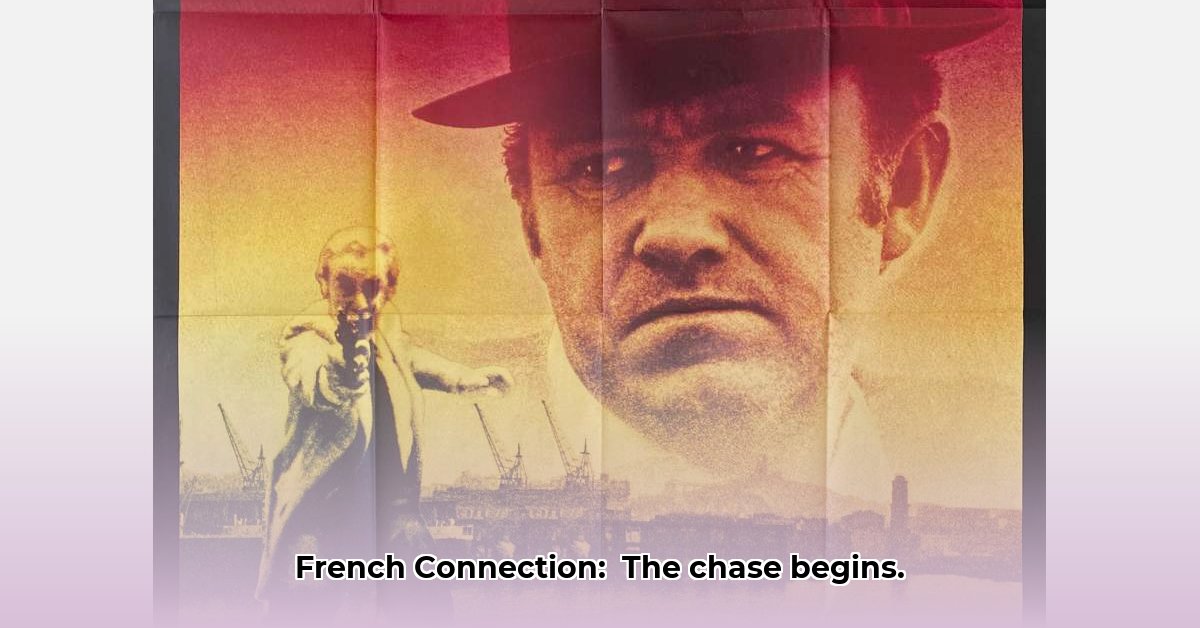
Eish, that car chase! You know the one – the bone-jarring, stomach-churning pursuit through the grimy streets of 1970s New York in The French Connection. It's not just a scene, it's a cinematic legend, a moment that redefined action cinema and left an indelible mark on filmmaking. But this ain't just another cop flick, no sir. Released in 1971, The French Connection offered a raw, unflinching look at the city that never sleeps, a city grappling with crime, corruption, and the simmering social unrest of the era. Director William Friedkin didn't just show us the darkness; he threw us right into it. For more intense chases, check out this cool car chase game.
A Grimy Detective Story in the Heart of 1970s New York
Imagine New York City in the early 70s. A concrete jungle where shadows stretched long and hidden dangers lurked around every corner; that's the grim backdrop for The French Connection. The story follows two New York City detectives, the relentlessly driven Jimmy "Popeye" Doyle (Gene Hackman, giving a powerhouse performance) and his slightly more cautious partner, Buddy "Cloudy" Russo (Roy Scheider). Their mission: track down a massive heroin smuggling operation that stretches from France right to the streets of the Big Apple.
This isn't a neat, Hollywood-style triumph. It's a procedural, a gritty exploration of police work, complete with plenty of moral grey areas. Doyle, especially, is a fascinating character – fiercely effective but utterly ruthless, bending the rules and often breaking them with a chilling lack of remorse. He's a compelling protagonist, even if his methods leave a lot to be desired. The film is less interested in offering easy answers, and more focused on portraying a complex situation with unflinching realism. It's a reminder that even good intentions can lead to morally dubious actions.
Friedkin's Revolutionary Style: Handheld Cameras and Gritty Realism
What truly separates The French Connection from its contemporaries is Friedkin’s daring filmmaking style. Forget the polished studio sets; Friedkin opted for location shooting, creating an almost documentary-like aesthetic. He embraced handheld cameras, resulting in a shaky, immersive experience that plunges the viewer directly into the action. The iconic car chase scene, for example, was largely improvised, adding to its raw, visceral energy. This revolutionary approach was a significant departure from the more controlled aesthetic of previous action films. This increased realism, achieved through both location shooting and the reliance on handheld camera techniques, would become a benchmark for future action films. Did you know that the film's gritty realism prompted a debate around ethical filmmaking practices, given the potentially dangerous filming methods?
The Controversy: A Necessary Discussion
Of course, we need to chat about the elephant in the room: the controversy surrounding the film's depiction of police brutality. Doyle's methods frequently cross the line, raising uncomfortable questions about the abuse of power and the blurred lines between justice and vigilantism. The film doesn't shy away from presenting these complexities, forcing viewers to confront the uncomfortable realities of law enforcement practices of the time. It doesn't offer easy answers, but instead throws the conflict directly into the viewer's lap. While it’s a powerful cinematic experience, the film also prompts a critical and vital discussion about police conduct, and the delicate balance between upholding the law and abusing authority.
A Legacy of Influence: The Lasting Impact on Action Cinema
The French Connection's influence on cinema is undeniable. Its gritty realism, intense action sequences (that car chase!), and morally ambiguous characters have served as inspiration for countless films. Doyle and Russo have become archetypes, their presence echoing in countless crime dramas that followed. Even today, the film's impact remains tangible, particularly in the stylistic choices in many modern crime thrillers that draw on its legacy. It isn't just entertainment; it's a masterclass which inspires filmmakers to this day. Is there a better example of a film that successfully blends grit with artistic skill?
Key Takeaways:
- The film's revolutionary filmmaking techniques, particularly the use of handheld cameras and location shooting, created a new standard of realism in action cinema.
- The morally ambiguous characters and their actions sparked – and continue to spark – vital discussions about police brutality and the abuse of power.
- The French Connection’s lasting impact on action cinema is undeniable, its influence visible in countless films that followed.
In closing, The French Connection isn't simply a thrilling action movie; it's a snapshot of a specific time and place, reflecting the anxieties and moral complexities of 1970s America. It's a wild ride, certainly, but also a potent and thought-provoking exploration of crime, justice, and the human condition. Decades later, its raw energy and uncompromising vision still resonate, confirming its place as a true cinematic classic. Ag shame, you really should give it a watch.